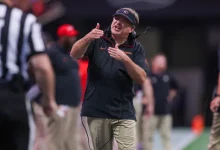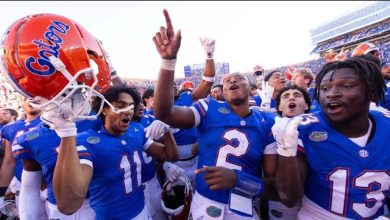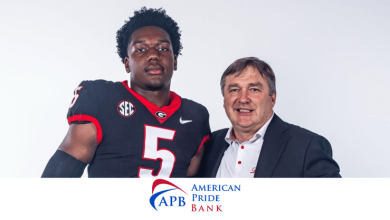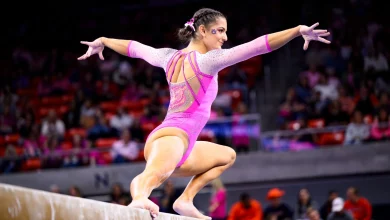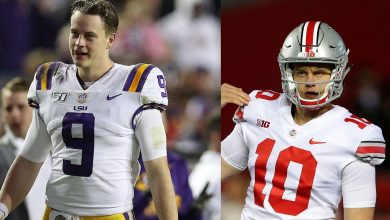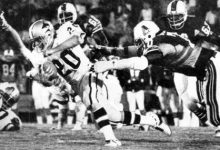Caleb Williams is poised to outplay Jayden Daniels in Year 2 due to superior athleticism, leadership potential, improved decision-making, and a stronger supporting cast.
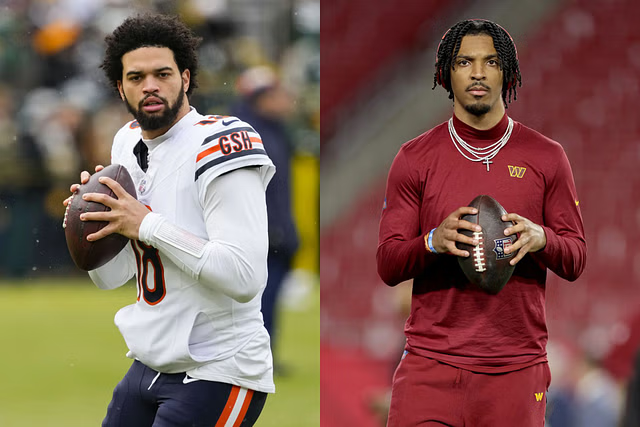
The NFL landscape is constantly evolving, with young quarterbacks emerging as the focal point of team success and franchise trajectories. Among these rising stars, Caleb Williams and Jayden Daniels have garnered considerable attention. While both show promising talent, many analysts and fans believe Caleb Williams is positioned to outperform Jayden Daniels in Year 2. This assertion is rooted in a combination of physical attributes, leadership qualities, developmental progress, and team context.
This analysis aims to dissect the reasons behind this projection, exploring the nuances of their skill sets, growth trajectories, and surrounding support systems to understand why Caleb Williams is expected to outshine Jayden Daniels in their second NFL seasons.
1. Athleticism and Physical Tools
Caleb Williams: The Ultimate Dual-Threat
Caleb Williams’s athletic profile is one of the most impressive among NFL quarterbacks. His combination of size, speed, agility, and arm strength makes him a true dual-threat asset. Williams possesses exceptional mobility, allowing him to extend plays, evade pressure, and scramble for crucial yards. His quick first step and agility make him a nightmare for defenses trying to contain him outside the pocket.
Moreover, Williams’s arm talent is elite, capable of making deep throws on the run, threading tight windows, and delivering catchable balls under duress. His physical tools give him a significant edge in improvising under pressure and turning broken plays into explosive gains.
Jayden Daniels: Athletic but Less Explosive
Jayden Daniels, while athletic and mobile, does not possess the same level of explosiveness or arm strength as Williams. His mobility is more about elusiveness and extending plays rather than outright scrambling or running past defenders. Daniels’s arm strength is solid but not elite, which sometimes limits his ability to make all throws at an NFL level.
Implication for Year 2
Williams’s superior athleticism allows him to be more dynamic and unpredictable. As defenses adapt to his playmaking, his ability to make off-script plays will be crucial. The physical tools he brings give him an advantage in creating opportunities and extending drives, which can translate into better statistical output and leadership on the field.
2. Leadership Potential and Mental Toughness
Caleb Williams: Emerging Leader
While still early in his NFL journey, Williams has displayed qualities of a natural leader during his college career and early NFL interactions. His confidence, poise, and competitive nature suggest he has the mental makeup to command a huddle and inspire teammates.
Leadership is not solely about vocal dominance but also about resilience, work ethic, and the ability to elevate team performance. Williams has shown flashes of these traits, embracing challenges and demonstrating a desire to improve.
Jayden Daniels: Developing Leader
Jayden Daniels has also shown leadership qualities but is generally perceived as still developing in this area. His calm demeanor and work ethic are evident, but he may not yet possess the same level of commanding presence or confidence that Williams displays.
Impact on Year 2
Leadership often correlates with performance, especially under pressure. A quarterback who can rally teammates, stay composed in clutch moments, and accept responsibility tends to be more effective over the long haul. Williams’s emerging leadership skills, combined with his competitive mindset, position him favorably to outperform Daniels in high-stakes situations.
3. Decision-Making and Football IQ
Caleb Williams: Rapid Learner and Playmaker
Williams’s college tape demonstrates excellent decision-making, often choosing the best options quickly and avoiding costly mistakes. His football IQ is high; he reads defenses well and makes pre-snap adjustments effectively. His ability to process information rapidly allows him to identify open receivers or choose to run when necessary.
In the NFL, this translates into fewer turnovers, better clock management, and more efficient drives. As he acclimates to the league’s speed and complexity, his decision-making is expected to improve further.
Jayden Daniels: Solid but Less Developed
Daniels has shown good decision-making but occasionally forces throws or makes questionable choices under pressure. His processing speed is good but not at the level of Williams’s, which can lead to more mistakes in tight situations.
Projection for Year 2
Improved decision-making is critical for sustained success. Williams’s ability to learn from his rookie season, adapt to NFL defenses, and make smarter choices will likely give him an edge over Daniels in Year 2, especially in critical moments.
4. Supporting Cast and Team Context
Caleb Williams: The Power of a Better Supporting Cast
While individual talent is vital, the surrounding team context significantly influences quarterback performance. Williams benefits from a better supporting cast: offensive linemen, skill-position players, and coaching staff that emphasize a balanced, strategic approach.
A strong supporting cast allows Williams to execute a variety of offensive schemes, provides him with reliable protection, and creates opportunities for explosive plays. This environment fosters confidence, reduces pressure, and enables him to showcase his full skill set.
Jayden Daniels: Challenges and Opportunities
Daniels, on the other hand, has faced more challenges with his supporting cast. Limited protection, inconsistent blocking, or less dynamic receivers can hinder his performance. However, a change or improvement in support could significantly impact his Year 2 development.
Implication
While the quality of the supporting cast isn’t the sole determinant, it can amplify or dampen a quarterback’s potential. Williams’s current team setup is arguably more conducive to his growth and success, giving him an advantage in outperforming Daniels.
5. Development Trajectory and Learning Curve
Caleb Williams: Rapid Adaptation
Williams’s college career exhibited rapid growth, and early NFL evidence suggests he is adapting quickly. His ability to learn from rookie mistakes, improve his mechanics, and understand NFL defenses indicates a high ceiling for Year 2.
Furthermore, his work ethic, film study habits, and willingness to learn from coaching staff suggest he is on an upward trajectory. These factors contribute to the expectation that he will capitalize on his raw talent and become more efficient.
Jayden Daniels: Steady but Less Explosive Growth
Daniels’s development has been steady, but he may need more time to fully harness his athletic gifts and refine his decision-making. His growth trajectory might be more gradual, which could impact his Year 2 performance relative to Williams.
Outlook
Players with a higher ceiling and faster learning curves are more likely to outperform peers in Year 2. Given Williams’s demonstrated ability to adjust and improve quickly, he is positioned for a breakout season.
6. Intangibles and Clutch Performance
Caleb Williams: Competitive Fire
Williams’s competitive nature and desire to succeed are evident from his college days. His mental toughness and confidence in clutch moments suggest he thrives under pressure—an essential trait for outperforming in Year 2.
Jayden Daniels: Calm and Composed
While Daniels is composed, he may not have showcased the same level of clutch performance or aggressive leadership in critical situations. The ability to elevate play during high-pressure moments can be a decisive factor.
Impact
Quarterbacks who demonstrate resilience and clutch gene tend to improve faster and perform better in critical games, making Williams’s intangibles an advantage for Year 2.
7. The Prediction: Why Caleb Williams Will Outperform Jayden Daniels
Based on the analysis of athleticism, leadership, decision-making, team support, development trajectory, and intangibles, several reasons support the projection that Caleb Williams will outplay Jayden Daniels in Year 2:
- Superior Athletic Profile: Williams’s dual-threat ability makes him more unpredictable and explosive.
- Higher Leadership Ceiling: His emerging leadership qualities and confidence position him as a more influential leader.
- Better Decision-Making: Williams’s football IQ and quick processing will reduce turnovers and improve efficiency.
- Supporting Cast Advantage: His team environment is more conducive to his success.
- Faster Development: Williams’s history of rapid growth suggests he can make significant improvements.
- Clutch and Resilience: His competitive nature and mental toughness give him an edge in high-pressure situations.
8. Potential Challenges and Caveats
While the outlook favors Williams, it’s essential to recognize potential hurdles:
- Injury Risks: Durability remains a concern for young, mobile quarterbacks.
- Adjustment Period: NFL defenses are complex; early struggles could temper expectations.
- Team Dynamics: Changes within team management or coaching could influence performance.
- Consistency: Maintaining high-level play week-to-week is a challenge for all young quarterbacks.
In conclusion, multiple factors suggest Caleb Williams is poised to outperform Jayden Daniels in Year 2. His exceptional athleticism, leadership potential, decision-making ability, and advantageous team support create a compelling case. While Daniels continues to develop steadily, Williams’s higher ceiling and rapid growth trajectory position him as the more likely of the two to elevate his game significantly in his second NFL season.
This projection underscores the importance of not only raw talent but also mental toughness, adaptability, and environment in shaping a young quarterback’s success. If Williams continues to refine his skills, embrace leadership roles, and stay healthy, he has every opportunity to surpass Daniels and establish himself as a top-tier NFL quarterback in the coming years.

